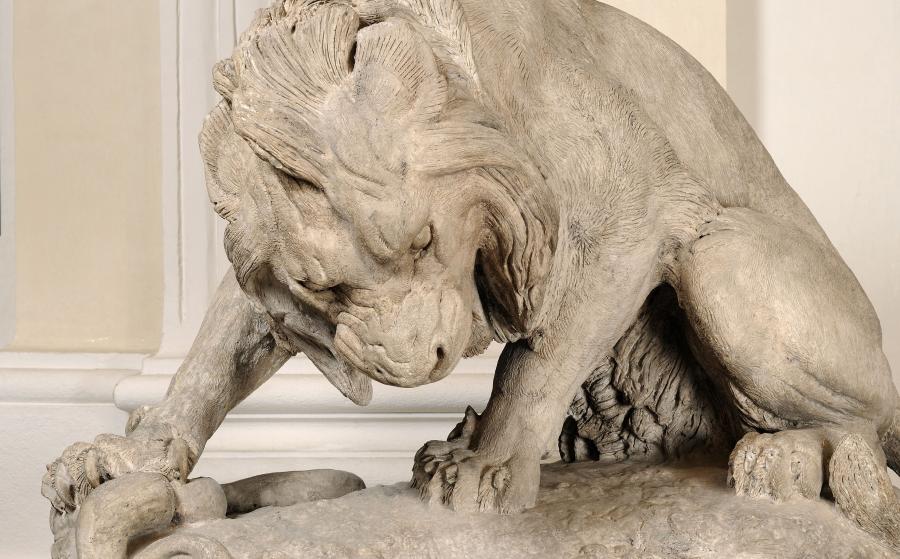Lion with snake
Information sur l’artiste
ANTOINE LOUIS BARYE [PARIS, 1796 – PARIS, 1875]

Lion au serpent, 1832.
Image © Lyon MBA - Photo Alain Basset
Sculptor Antoine Louis Barye's career took off when a group depicting a tiger devouring a gharial met great success at the Paris Salon of 1831. From that moment on, he became part of the new Romantic school, specialising in animal genre. He had raised people's expectations, and he lived up to them in the show that followed, exhibiting the plaster version of an even more impressive creation, Lion with snake. The violence of the subject, possibly inspired by English engravings, the size of the sculpture, and its superb descriptive quality and realism make this a striking piece. This type of scene had been illustrated by painters, yet it was an unusual subject for a sculptor. It is possible that the idea came to Barye from the five lions and eight lionesses that were brought from Africa to the menagerie of the Paris Natural history museum in 1830, a place where Barye often went, spending time sketching studies of animals. Some have also interpreted the piece as a political allegory, seeing the lion as a symbol of the new July Monarchy – a political regime born under the auspices of this star sign - that crushed an attempted revolt in 1830.
The success of this work led king Louis-Philippe to commission Barye to create a marble version of it. However, this was abandoned in favour of bronze, the Romantics' priviledged material, the casting being entrusted to Honoré Gonon. This version (1836, Paris, the Louvre) was then exhibited in front of the Tuileries Palace. In response to demand, the artist also modelled reductions designed for reproduction.
1832
Plaster
H. 135; L. 178.5; D. 100 cm
Long term loan from the Centre national des arts plastiques in 1998
Inv. H 2457





